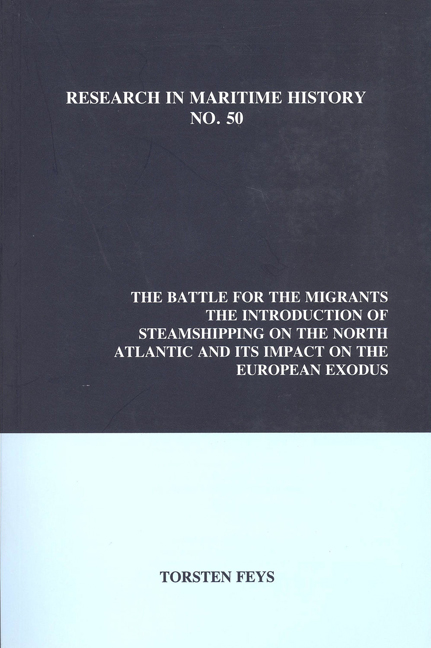 The Battle for the Migrants
The Battle for the Migrants The impact of steamshipping on migration patterns has not gone unnoticed by migration historians. Steam propulsion reduced the duration of the crossing to less than two weeks and increased the regularity of sailings. The shorter transit and travelling times limited the period during which the migrant remained without income. Mortality rates dropped to below one percent. With the reduced costs, time and risks, migration became less permanent. A growing number of single individuals made the crossing with the intention of accumulating a certain amount of capital before returning, instead of moving permanently with the family. Steamships gained so much popularity with migrants that by the end of the Civil War in 1865 the fleet could not meet the demand. Attracted by the high dividends paid out by steamship lines, new ventures mushroomed, driving sailing ships off the main North Atlantic routes by 1873.
Yet as Francis Hyde has noted, “the real point to grasp is that it was the steamship which changed the whole nature, organization and profitability of the migrant trade.” Only because of the increased organization and commercialization of this trade was the transatlantic migration movement able to attain the sheer volume it did. Maritime and migration networks have too often been considered as parallel webs, but the commercialization of migrant transport firmly connected both of them. These networks encompassed the entire Atlantic world, connecting state authorities, business and labour interests with the individual migrant. The works of Rolf Engelsing and Marianne Wockek in analyzing how the business was organized during the golden age of sail have not been followed up by studies analyzing the true impact of steam on the organization of the migrant trade. With the transition from sail to steam and the subsequent concentration of the migrant transport business in the hands of one or a limited number of steamship companies in major European ports, a shift from port to company competition took place. In the following chapters we will discuss how company agents of the Holland-America Line (HAL) took over the efforts of consuls abroad to attract the migrant flow to Rotterdam. In the process, promoting the good reputation of Rotterdam as a migrant gateway became ever-more associated with the services offered by the HAL. Migrants no longer migrated through a specific port but rather with a particular company whose reputation often reflected that of the harbour.
To save this book to your Kindle, first ensure [email protected] is added to your Approved Personal Document E-mail List under your Personal Document Settings on the Manage Your Content and Devices page of your Amazon account. Then enter the ‘name’ part of your Kindle email address below. Find out more about saving to your Kindle.
Note you can select to save to either the @free.kindle.com or @kindle.com variations. ‘@free.kindle.com’ emails are free but can only be saved to your device when it is connected to wi-fi. ‘@kindle.com’ emails can be delivered even when you are not connected to wi-fi, but note that service fees apply.
Find out more about the Kindle Personal Document Service.
To save content items to your account, please confirm that you agree to abide by our usage policies. If this is the first time you use this feature, you will be asked to authorise Cambridge Core to connect with your account. Find out more about saving content to Dropbox.
To save content items to your account, please confirm that you agree to abide by our usage policies. If this is the first time you use this feature, you will be asked to authorise Cambridge Core to connect with your account. Find out more about saving content to Google Drive.